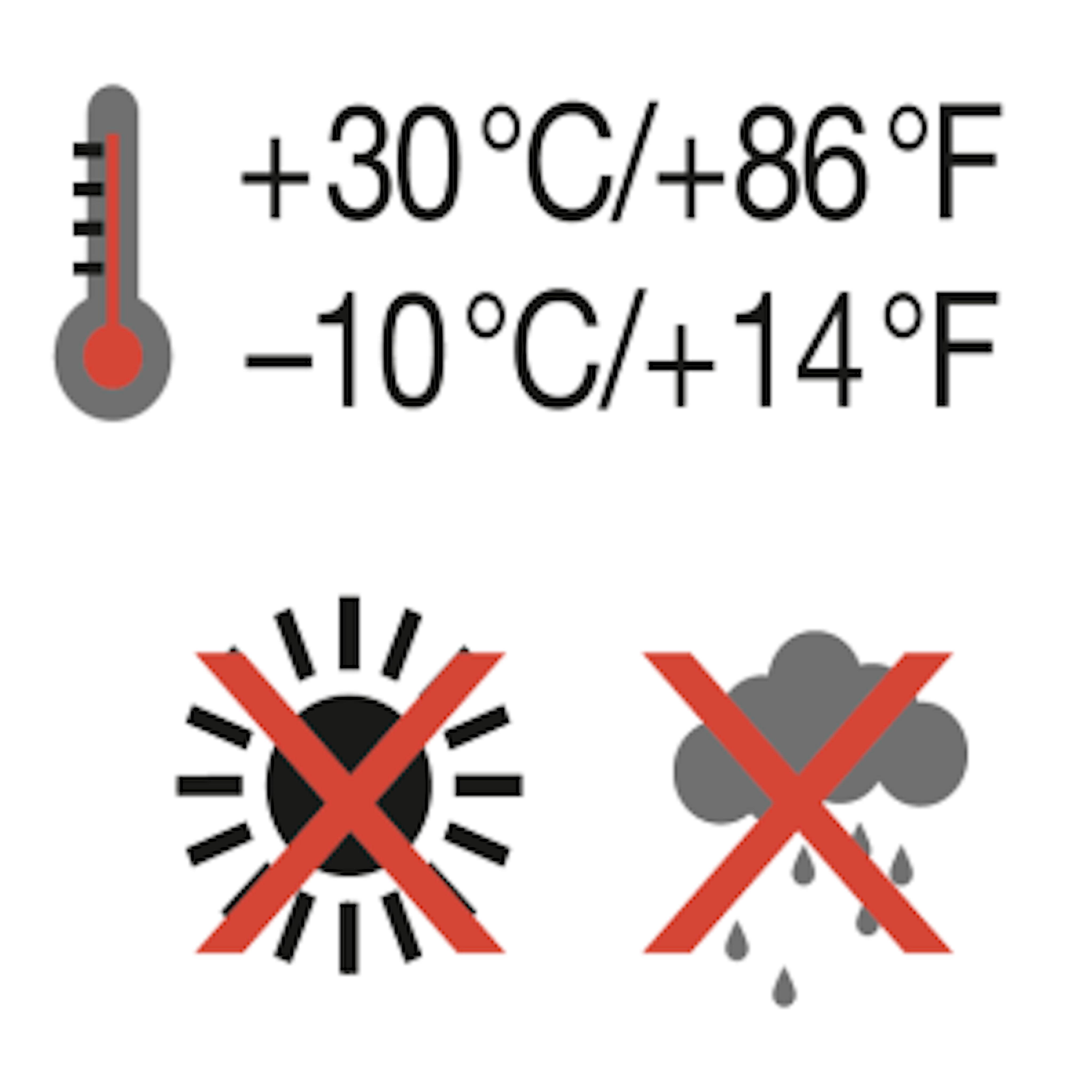Harnesses
A regular and thorough check of your harness is a must to ensure it is safe to use. Start by checking the waist belt, leg loops, and buckles for any abnormalities or signs of wear and tear. Next, inspect the tie-in and belay loop. Replace your harness immediately if:
The 'indicator' color-contrast core of the webbing in the upper tie-in point or belay loop shows through:
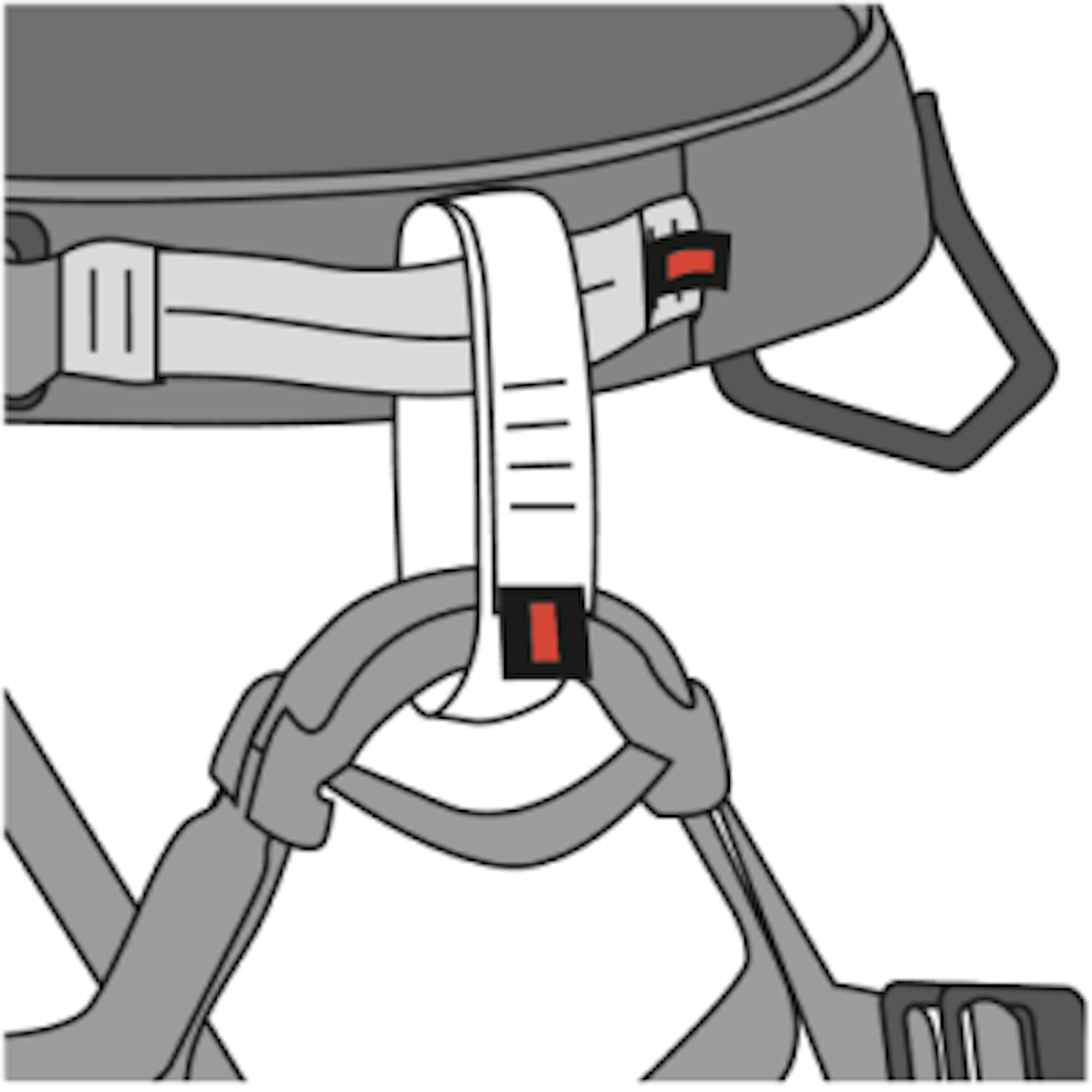
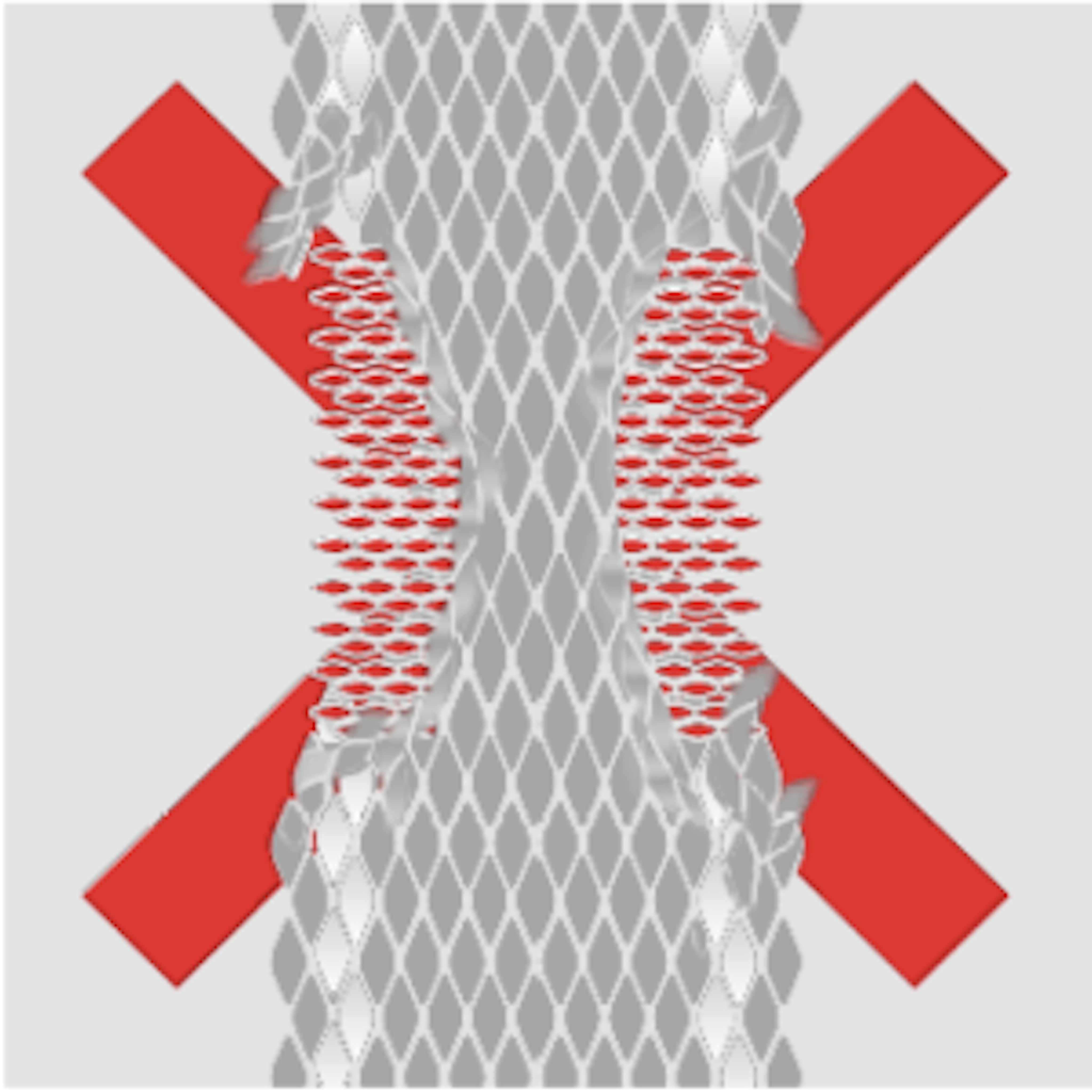
- The stitching is damaged. Check the safety stitching on both sides to ensure threads are not cut, worn, or loose.
- It is heavily and irreversibly soiled (e.g. with grease or oil).
- It was exposed to extreme heat or friction and shows signs of fusing or melting.
- It shows signs of corrosion.
Hand wash your harness in the bathtub or sink with lukewarm water and a mild synthetics detergent. Be sure to rinse well and hang it to dry, away from the sun. You can also machine wash your harness instead, using a gentle wool wash cycle. An additional rinse cycle is recommended. Do not tumble dry.
Please note that if climbing near salt water, a regular wash is all the more important as salt has a corrosive effect and can damage your gear.
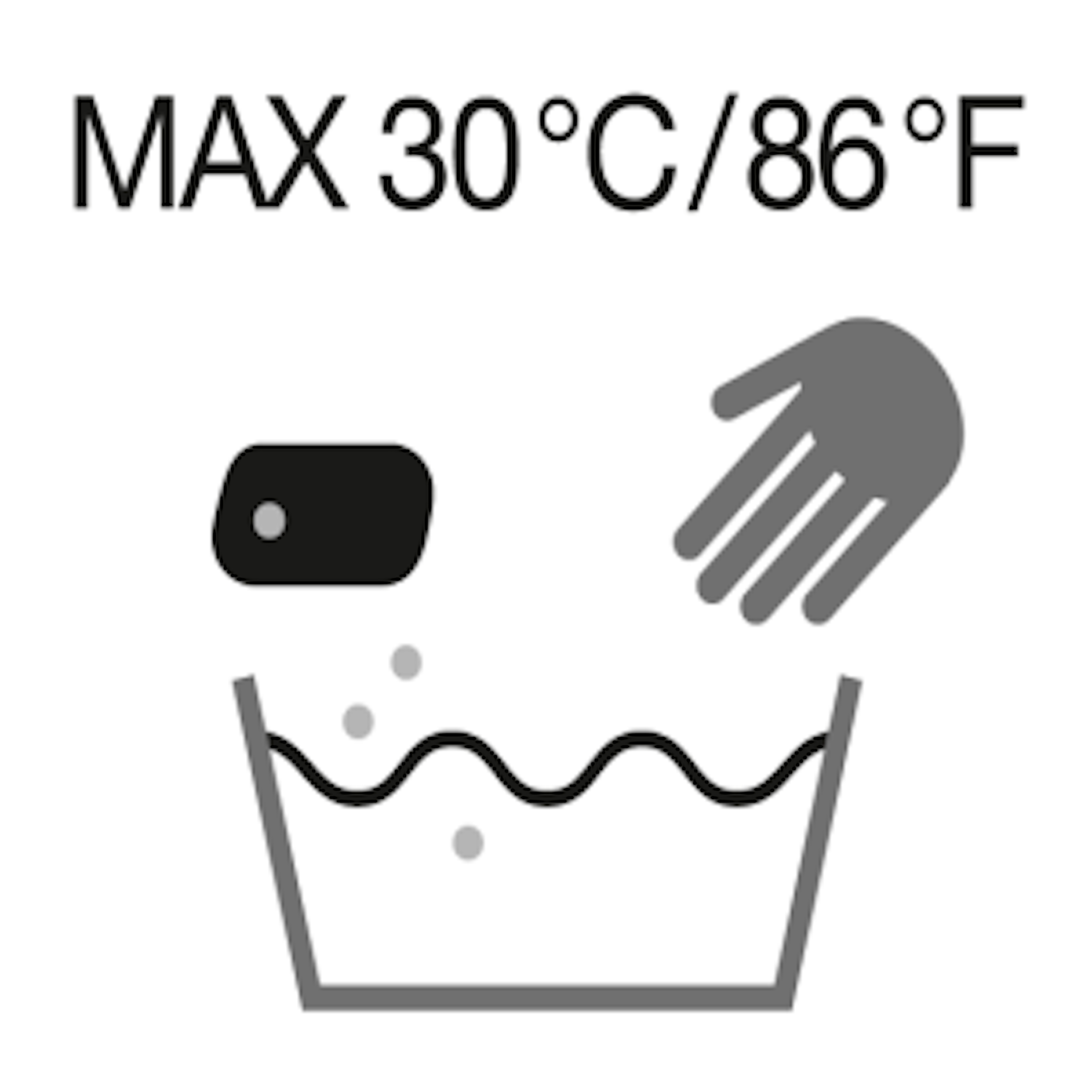
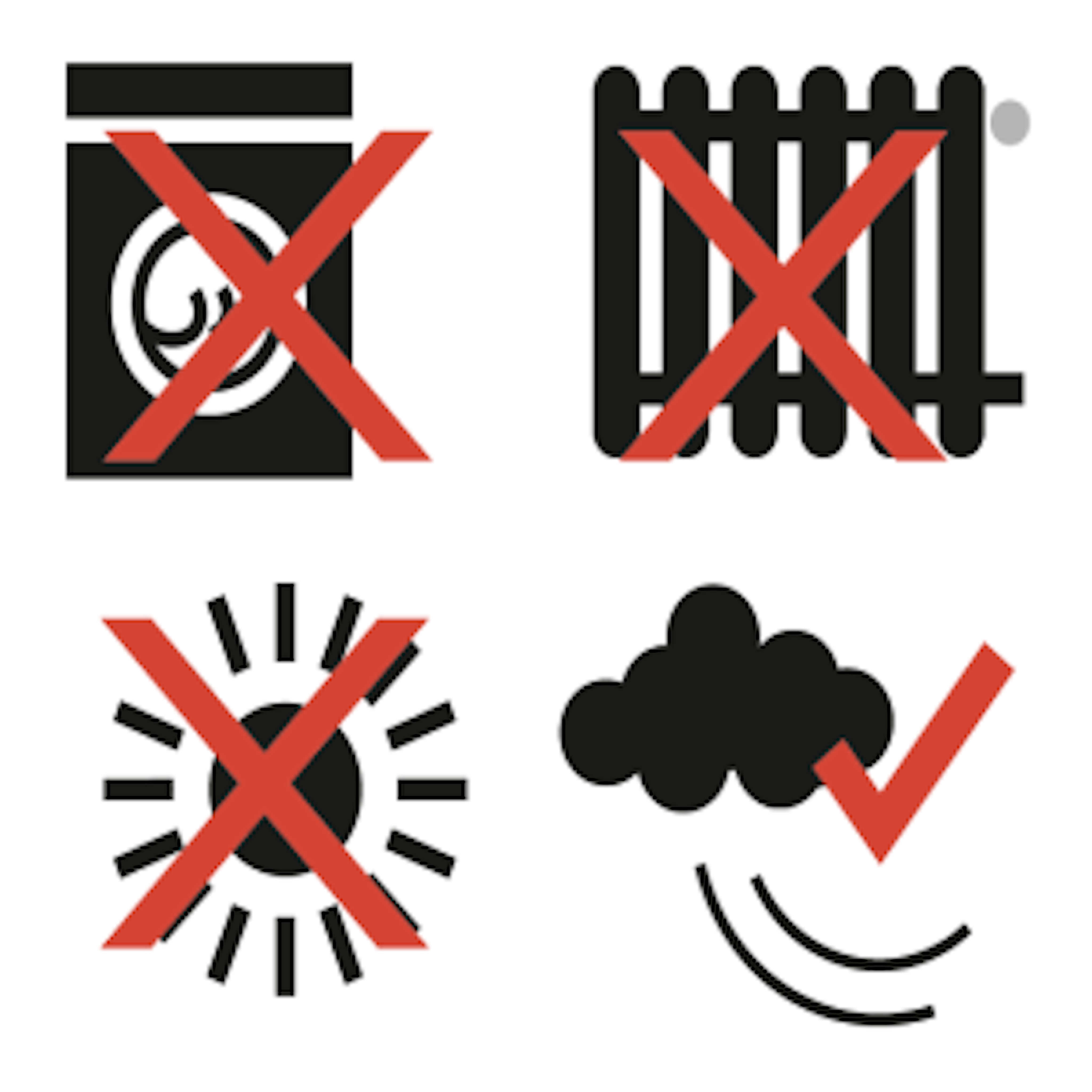
Unless you use it professionally, your harness will spend most of its life in storage. Keeping it safe and comfortable in this time will help it live a long and happy life, even with more regular use. We recommend:
- Using the storage bag we provide with each harness for storage and transport. This helps keep it clean and protects it from abrasion.
- Ensuring your harness is fully dry before storing.
- Storing it somewhere dry, dark and cool to avoid mould, bleaching and premature aging.
- Storing it away from sharp objects such as ice picks and crampons, as well as harsh chemicals like paint, solvents, acid, and glue.
- Storing it with enough space to avoid being damaged/squished by other heavy equipment.
